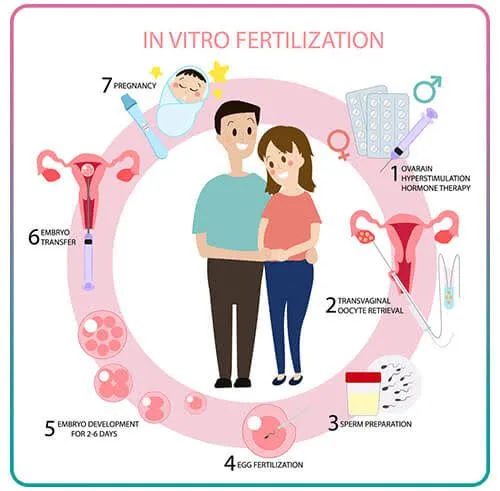Introduction:
In vitro fertilization (IVF) has revolutionized the world of reproductive medicine, offering hope and options to individuals and couples struggling with fertility issues. This groundbreaking assisted reproductive technology has helped millions of people worldwide fulfill their dreams of having a biological child. In this blog post, we will provide an in-depth overview of IVF, covering the procedure, success rates, costs, and important considerations for those considering this path to parenthood.
What is IVF?
In vitro fertilization, commonly known as IVF, is a complex medical procedure where eggs are fertilized by sperm outside the body, in a laboratory setting. The fertilized embryos are then carefully monitored and, if viable, transferred back into the uterus for implantation. IVF may be recommended for various fertility challenges, including fallopian tube blockages, low sperm count, ovulation disorders, endometriosis, or unexplained infertility.
IVF Procedure:
a. Ovarian Stimulation: The first step of IVF involves stimulating the ovaries with fertility medications to produce multiple mature eggs. b. Egg Retrieval: Once the eggs have matured, they are retrieved from the ovaries using a minimally invasive procedure called transvaginal ultrasound aspiration. c. Sperm Collection: On the day of egg retrieval, a semen sample is collected from the male partner or a donor. d. Fertilization: The eggs and sperm are combined in a laboratory dish to facilitate fertilization. In some cases, intracytoplasmic sperm injection (ICSI) may be used to inject a single sperm directly into an egg. e. Embryo Culture: Fertilized eggs develop into embryos and are cultured in a controlled environment for a few days. f. Embryo Transfer: The best-quality embryos are selected and transferred into the uterus via a catheter. Extra embryos can be cryopreserved for future use. g. Pregnancy Test: Approximately two weeks after the embryo transfer, a blood test or urine test is conducted to determine if pregnancy has occurred.
Success Rates:
IVF success rates can vary depending on several factors, including maternal age, the cause of infertility, the quality of the eggs and sperm, and the expertise of the fertility clinic. Generally, success rates decline with age. According to the American Society for Reproductive Medicine, the live birth rate per IVF cycle for women under 35 is approximately 40%, while it decreases to around 20% for women aged 38-40.
Considerations before Choosing IVF:
a. Emotional and Physical Demands: IVF can be a physically and emotionally demanding journey. It’s important to be prepared for the potential stress, hormonal changes, and emotional ups and downs that may accompany the process. b. Financial Considerations: IVF can be a significant financial investment. Costs can vary widely based on factors such as location, clinic reputation, additional treatments, and the need for multiple cycles.


